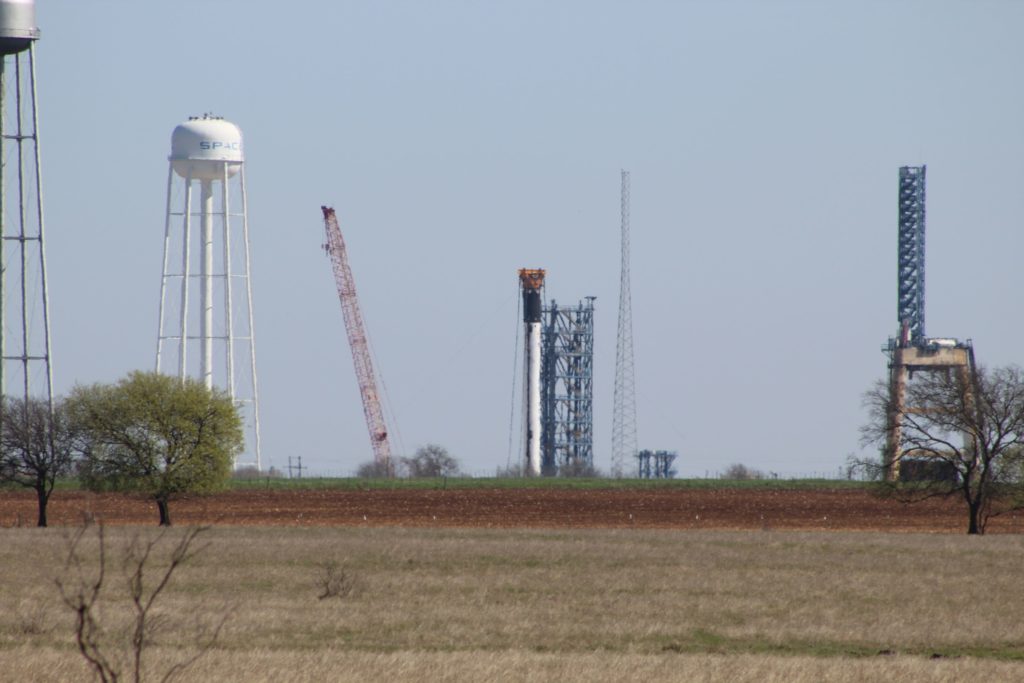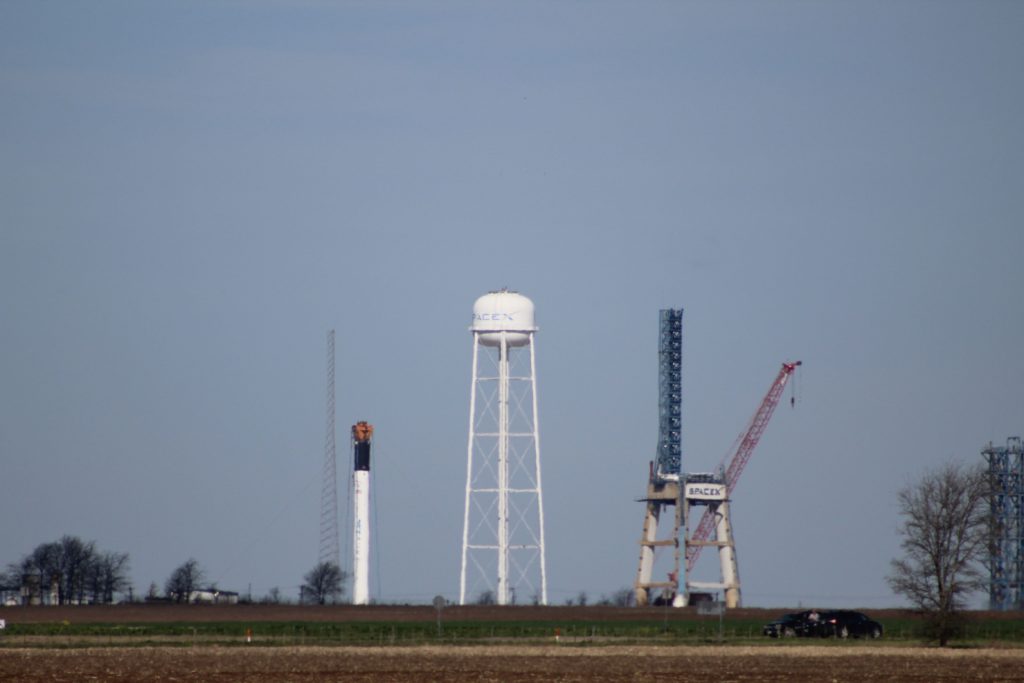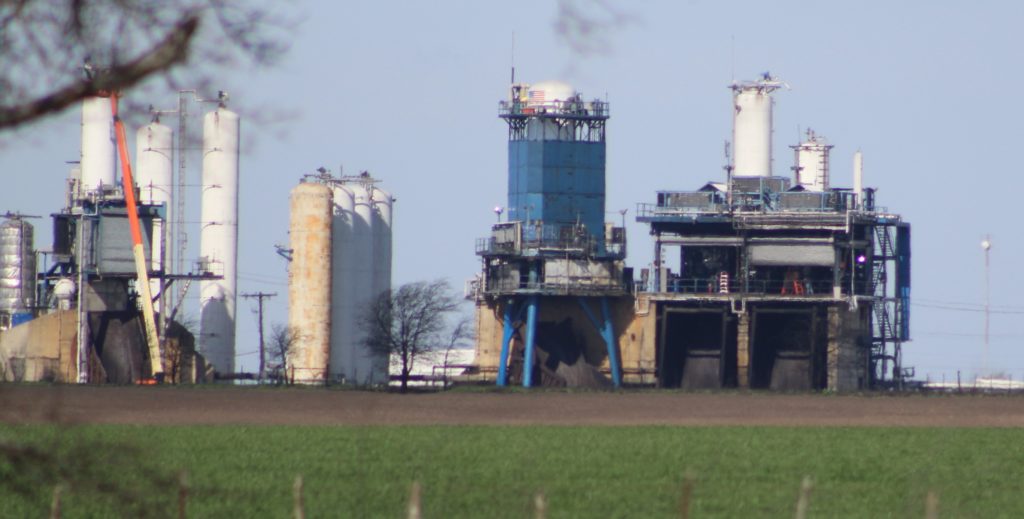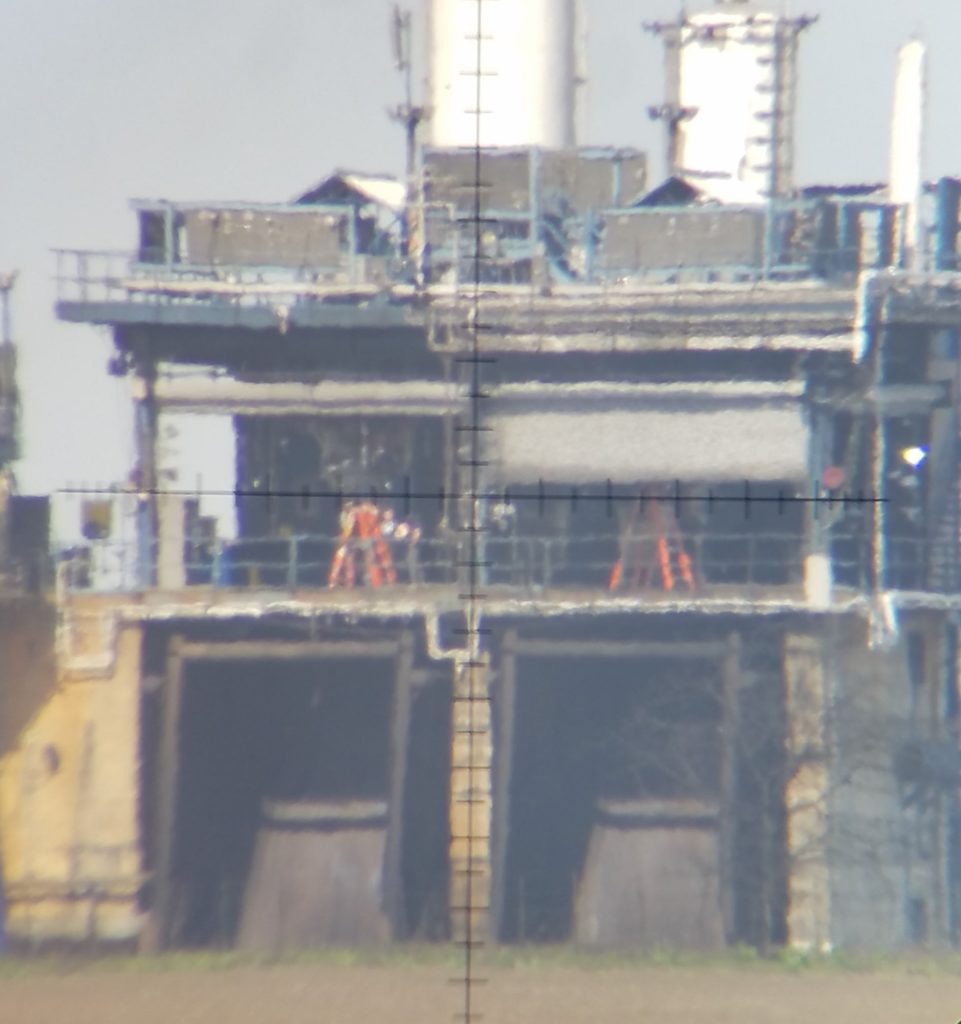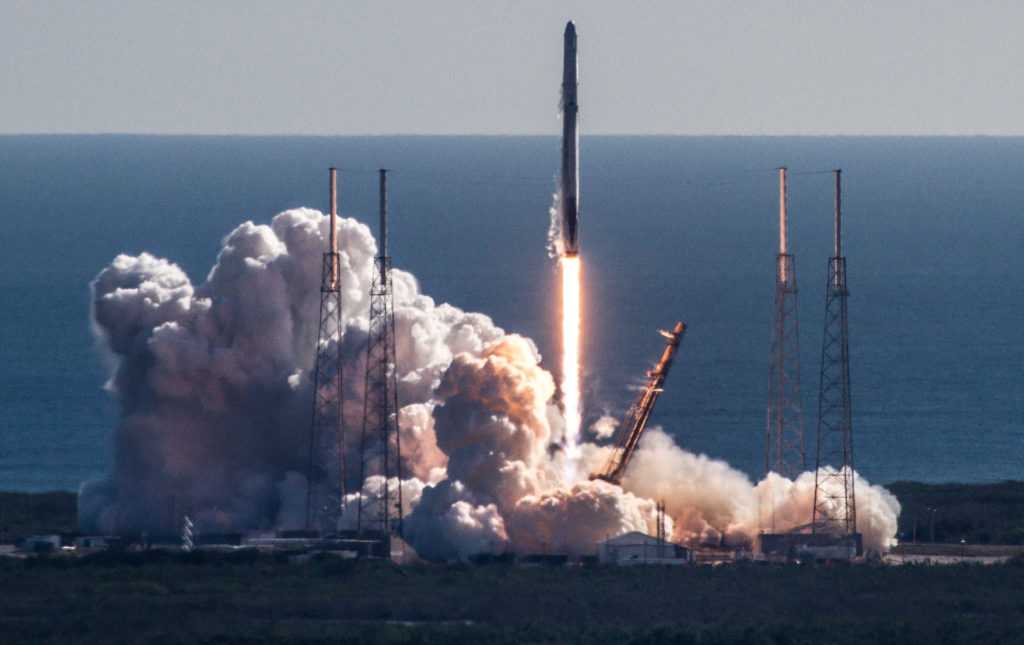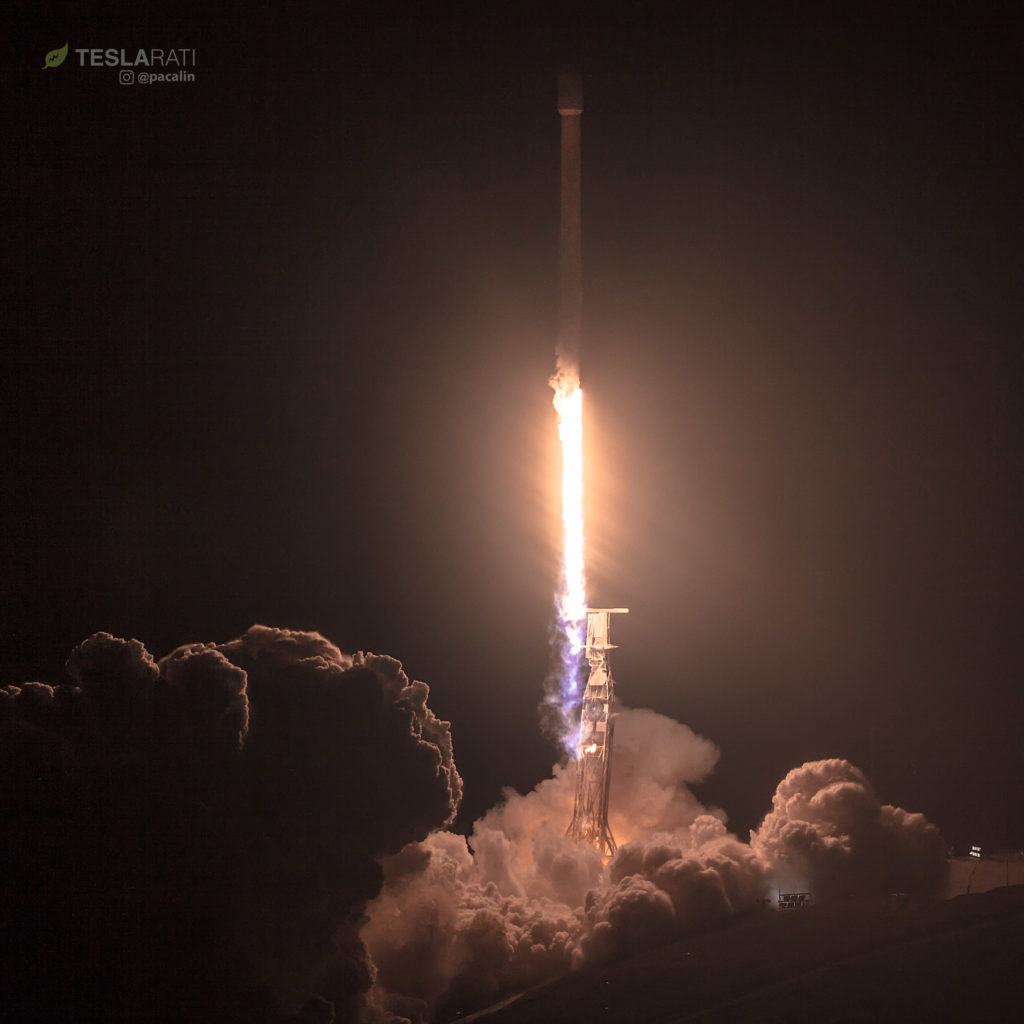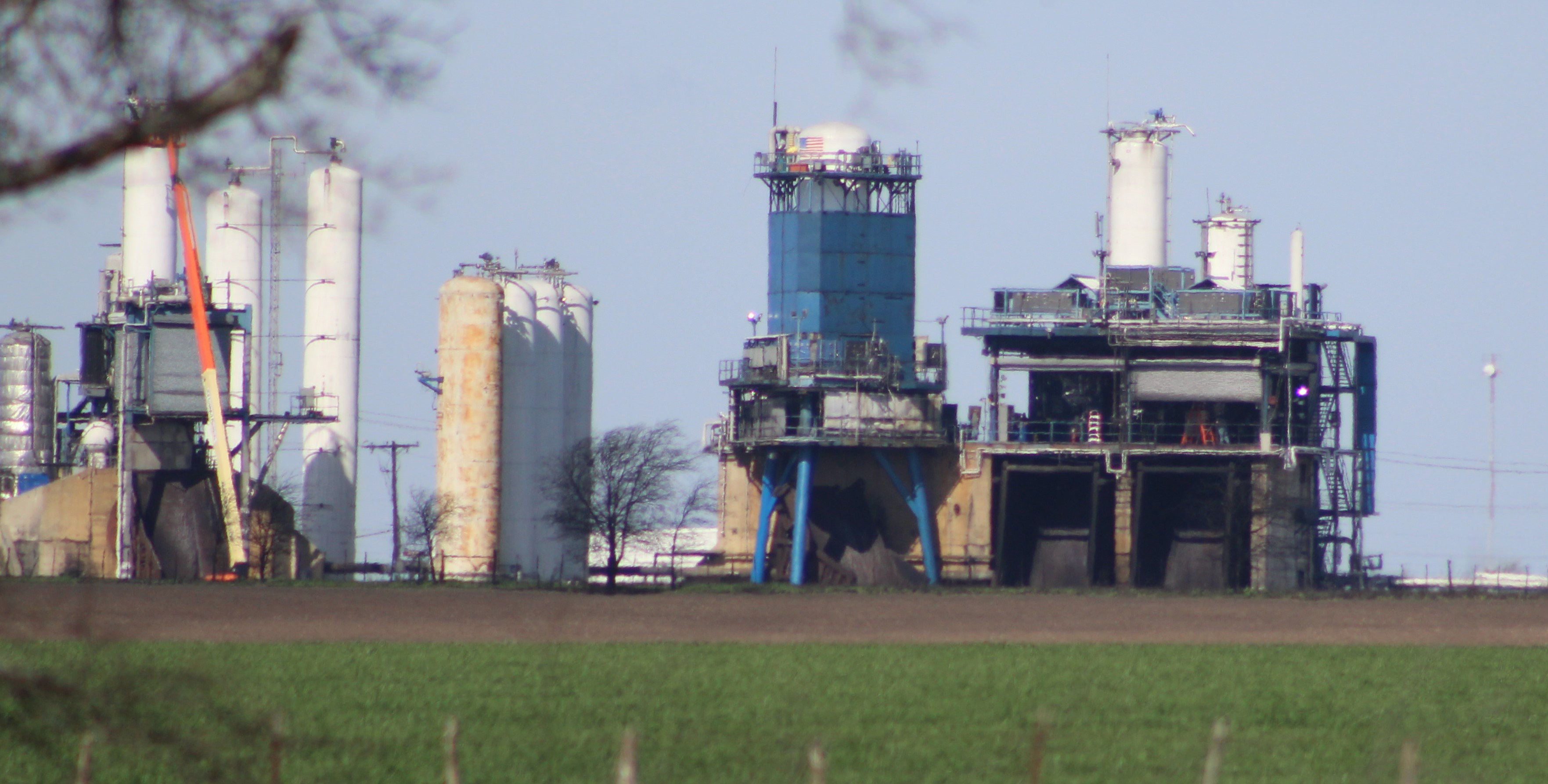

SpaceX
SpaceX’s next-gen Falcon 9 spied continuing tests in Texas
Awaiting the first static fire of SpaceX’s newest upgraded Falcon 9, known as Block 5, local observers and SpaceX fans alike have been on high alert ever since the first booster (B1046) went vertical at the company’s McGregor, TX facilities on Feb. 26.
Preparing for a suite of tests ahead of its inaugural launch from Florida’s Kennedy Space Center, B1046 has been quiet in Texas for much longer than most Falcon hardware. Much like the additional static fires they complete at SpaceX’s launch facilities, boosters are meant to spend less than a week or two on the static fire test stand in McGregor – several days to set up, a few days to complete the static fire, and several days to validate the data gathered and ensure that the hardware is still healthy. 1046, however, has remained vertical at the TX test stand for a bit more than three weeks, and only appears to have ignited once for very brief (~1s) firing around two weeks ago.
- SpaceX’s first Block 5 Falcon 9 seen vertical at the company’s McGregor, TX testing facilities on March 20. (Reddit /u/HollywoodSX)
- SpaceX’s individual Merlin test stands (three are pictured) continue their busy work of testing all Merlin engines. (Reddit /u/HollywoodSX)
- SpaceX technicians can be seen preparing Merlin 1Ds for static fire testing. (Reddit /u/HollywoodSX)
According to photos taken by Reddit user HollywoodSX, the booster is still vertical at the stand as of March 20, and is now sporting what looks like an odd splotch above its relocated “SpaceX” logo. At this point, it can be assumed that SpaceX is cautious with significantly new Falcon 9 hardware, carefully testing a booster with fairly new structures, heat-shielding, Merlin 1Ds, and an array of additional refinements.
Perhaps the first static fire attempt was scrubbed prematurely; perhaps it was intentionally brief to check out startup parameters for all nine Merlins; or perhaps it began as a wet dress rehearsal (propellant loading test) that proceeded into an ignition test. More probably, however, the first routine static fire attempt likely uncovered some minor bugs in the booster’s new hardware or design, signified by the fact that B1046 appears to have remained vertical for the entire interim period. Had serious problems been uncovered, the rocket would have been brought horizontal and taken inside SpaceX’s on-site facilities for in-depth analysis, disassembly, and repairs or modifications.
https://www.instagram.com/p/BgfboKIB17H/
Moreover, SpaceX shipped another Falcon 9 booster out of its Hawthorne, CA factory on Monday, March 19. Barring something far outside the norm, the above booster is almost certainly B1047, better known as the second-ever Block 5 first stage. 1047’s shipment would all but guarantee that 1046’s testing is progressing largely as planned. If there were, in fact, major issues with the rocket leading to unplanned delays, 1047 would almost certainly remain at SpaceX’s Hawthorne factory until the problems with the booster in McGregor could be properly characterized. If repairs or modifications had to occur, Hawthorne is a far more convenient and optimal environment to complete them, and delaying shipment would also avoid unnecessarily taking the risk and wasting the week or so it takes to prepare and ship the rocket cross-country.
All things considered, Block 5’s inaugural flight appears to be moving forward slowly but surely, and anyone with interest in aerospace is eagerly awaiting its first flights. As of March 18, the satellite – Bangabandhu-1 – is still in France, awaiting confirmation from SpaceX of T-15 days to launch before shipping out to Florida. Tentatively scheduled for launch NET April 5, that date would appear to need SpaceX’s confirmation today – any later and the launch is likely to be delayed equivalently.
- Falcon 9 1035 and its Dragon cargo roar away from LC-40 on their second trips to space. (Tom Cross)
- Falcon 9 roars into the dark California sky with PAZ and Starlink. (Pauline Acalin)
Up next for SpaceX is the fifth launch for Iridium Communications, NET March 29 from California. Days later, SpaceX’s next reused Cargo Dragon mission (CRS-14) is scheduled to lift off from SpaceX’s Florida LC-40 pad on April 2. Both launches will feature sooty, flight-proven Falcon 9 boosters and will be covered live by Teslarati’s photographers Pauline Acalin and Tom Cross.
Follow us for live updates, behind-the-scenes sneak peeks, and a sea of beautiful photos from our East and West coast photographers.
Teslarati – Instagram – Twitter
Tom Cross – Twitter
Pauline Acalin – Twitter
Eric Ralph – Twitter
News
SpaceX launches Ax-4 mission to the ISS with international crew
The SpaceX Falcon 9 launched Axiom’s Ax-4 mission to ISS. Ax-4 crew will conduct 60+ science experiments during a 14-day stay on the ISS.
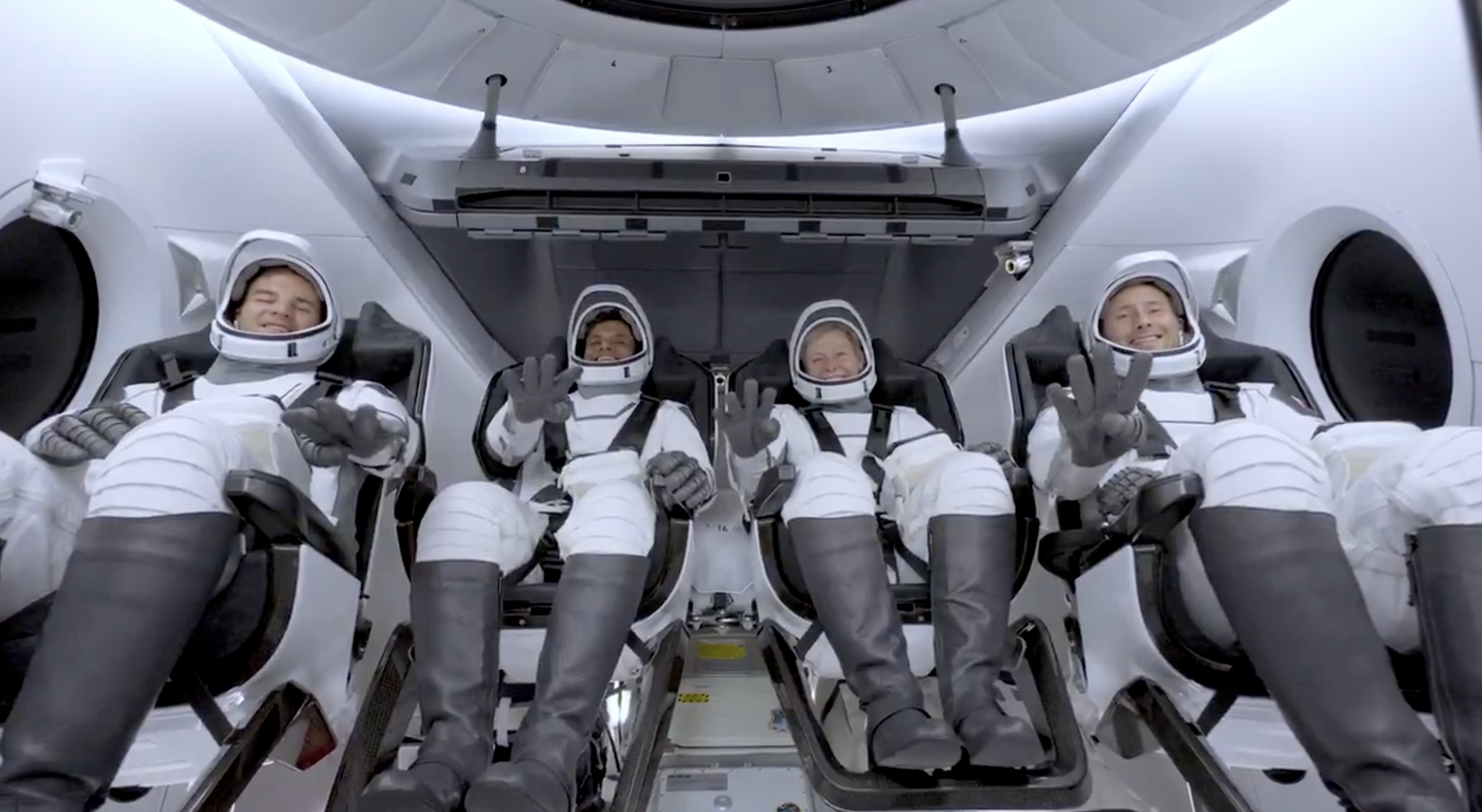
SpaceX launched the Falcon 9 rocket kickstarting Axiom Space’s Ax-4 mission to the International Space Station (ISS). Axiom’s Ax-4 mission is led by a historic international crew and lifted off from Kennedy Space Center’s Launch Complex 39A at 2:31 a.m. ET on June 25, 2025.
The Ax-4 crew is set to dock with the ISS around 7 a.m. ET on Thursday, June 26, 2025. Axiom Space, a Houston-based commercial space company, coordinated the mission with SpaceX for transportation and NASA for ISS access, with support from the European Space Agency and the astronauts’ governments.
The Ax-4 mission marks a milestone in global space collaboration. The Ax-4 crew, commanded by U.S. astronaut Peggy Whitson, includes Shubhanshu Shukla from India as the pilot, alongside mission specialists Sławosz Uznański-Wiśniewski from Poland and Tibor Kapu from Hungary.
“The trip marks the return to human spaceflight for those countries — their first government-sponsored flights in more than 40 years,” Axiom noted.
Shukla’s participation aligns with India’s Gaganyaan program planned for 2027. He is the first Indian astronaut to visit the ISS since Rakesh Sharma in 1984.
Axiom’s Ax-4 mission marks SpaceX’s 18th human spaceflight. The mission employs a Crew Dragon capsule atop a Falcon 9 rocket, designed with a launch escape system and “two-fault tolerant” for enhanced safety. The Axiom mission faced a few delays due to weather, a Falcon 9 leak, and an ISS Zvezda module leak investigation by NASA and Roscosmos before the recent successful launch.
As the crew prepares to execute its scientific objectives, SpaceX’s Ax-4 mission paves the way for a new era of inclusive space research, inspiring future generations and solidifying collaborative ties in the cosmos. During the Ax-4 crew’s 14-day stay in the ISS, the astronauts will conduct nearly 60 experiments.
“We’ll be conducting research that spans biology, material, and physical sciences as well as technology demonstrations,” said Whitson. “We’ll also be engaging with students around the world, sharing our experience and inspiring the next generation of explorers.”
SpaceX’s Ax-4 mission highlights Axiom’s role in advancing commercial spaceflight and fostering international partnerships. The mission strengthens global space exploration efforts by enabling historic spaceflight returns for India, Poland, and Hungary.
News
Starlink Cellular’s T-Mobile service to grow with third-party app data
From Oct 2025, T-Satellite will enable third-party apps in dead zones! WhatsApp, X, AccuWeather + more coming soon.

Starlink Cellular’s T-Mobile service will expand with third-party app data support starting in October, enhancing connectivity in cellular dead zones.
T-Mobile’s T-Satellite, supported by Starlink, launches officially on July 23. Following its launch, T-Mobile’s Starlink Cellular service will enable data access for third-party apps like WhatsApp, X, Google, Apple, AccuWeather, and AllTrails on October 1, 2025.
T-Mobile’s Starlink Cellular is currently in free beta. T-Satellite will add MMS support for Android phones on July 23, with iPhone support to follow. MMS support allows users to send images and audio clips alongside texts. By October, T-Mobile will extend emergency texting to all mobile users with compatible phones, beyond just T-Mobile customers, building on its existing 911 texting capability. The carrier also provides developer tools to help app makers integrate their software with T-Satellite’s data service, with plans to grow the supported app list.
T-Mobile announced these updates during an event celebrating an Ookla award naming it the best U.S. phone network, a remarkable turnaround from its last-place ranking a decade ago.
“We not only dream about going from worst to best, we actually do it. We’re a good two years ahead of Verizon and AT&T, and I believe that lead is going to grow,” said T-Mobile’s Chief Operating Officer Srini Gopalan.
T-Mobile unveiled two promotions for its Starlink Cellular services to attract new subscribers. A free DoorDash DashPass membership, valued at $10/month, will be included with popular plans like Experience Beyond and Experience More, offering reduced delivery and service fees. Meanwhile, the Easy Upgrade promotion targets Verizon customers by paying off their phone balances and providing flagship devices like the iPhone 16, Galaxy S25, or Pixel 9.
T-Mobile’s collaboration with SpaceX’s Starlink Cellular leverages orbiting satellites to deliver connectivity where traditional networks fail, particularly in remote areas. Supporting third-party apps underscores T-Mobile’s commitment to enhancing user experiences through innovative partnerships. As T-Satellite’s capabilities grow, including broader app integration and emergency access, T-Mobile is poised to strengthen its lead in the U.S. wireless market.
By combining Starlink’s satellite technology with strategic promotions, T-Mobile is redefining mobile connectivity. The upcoming third-party app data support and official T-Satellite launch mark a significant step toward seamless communication, positioning T-Mobile as a trailblazer in next-generation wireless services.
News
Starlink expansion into Vietnam targets the healthcare sector
Starlink aims to deliver reliable internet to Vietnam’s remote clinics, enabling telehealth and data sharing.

SpaceX’s Starlink expansion into Vietnam targets its healthcare sector. Through Starlink, SpaceX seeks to drive digital transformation in Vietnam.
On June 18, a SpaceX delegation met with Vietnam’s Ministry of Health (MoH) in Hanoi. SpaceX’s delegation was led by Andrew Matlock, Director of Enterprise Sales, and the discussions focused on enhancing connectivity for hospitals and clinics in Vietnam’s remote areas.
Deputy Minister of Health (MoH) Tran Van Thuan emphasized collaboration between SpaceX and Vietnam. Tran stated: “SpaceX should cooperate with the MoH to ensure all hospitals and clinics in remote areas are connected to the StarLink satellite system and share information, plans, and the issues discussed by members of the MoH. The ministry is also ready to provide information and send staff to work with the corporation.”
The MoH assigned its Department of Science, Technology, and Training to work with SpaceX. Starlink Vietnam will also receive support from Vietnam’s Department of International Cooperation. Starlink Vietnam’s agenda includes improving internet connectivity for remote healthcare facilities, developing digital infrastructure for health examinations and remote consultations, and enhancing operational systems.
Vietnam’s health sector is prioritizing IT and digital transformation, focusing on electronic health records, data centers, and remote medical services. However, challenges persist in deploying IT solutions in remote regions, prompting Vietnam to seek partnerships like SpaceX’s.
SpaceX’s Starlink has a proven track record in healthcare. In Rwanda, its services supported 40 health centers, earning praise for improving operations. Similarly, Starlink enabled remote consultations at the UAE’s Emirati field hospital in Gaza, streamlining communication for complex medical cases. These successes highlight Starlink’s potential to transform Vietnam’s healthcare landscape.
On May 20, SpaceX met with Vietnam’s Ministry of Industry and Trade, announcing a $1.5 billion investment to provide broadband internet, particularly in remote, border, and island areas. The first phase includes building 10-15 ground stations across the country. This infrastructure will support Starlink’s healthcare initiatives by ensuring reliable connectivity.
Starlink’s expansion in Vietnam aligns with the country’s push for digital transformation, as outlined by the MoH. By leveraging its satellite internet expertise, SpaceX aims to bridge connectivity gaps, enabling advanced healthcare services in underserved regions. This collaboration could redefine Vietnam’s healthcare infrastructure, positioning Starlink as a key player in the nation’s digital future.
-

 Elon Musk2 weeks ago
Elon Musk2 weeks agoTesla investors will be shocked by Jim Cramer’s latest assessment
-

 Elon Musk2 days ago
Elon Musk2 days agoxAI launches Grok 4 with new $300/month SuperGrok Heavy subscription
-

 Elon Musk5 days ago
Elon Musk5 days agoElon Musk confirms Grok 4 launch on July 9 with livestream event
-

 News1 week ago
News1 week agoTesla Model 3 ranks as the safest new car in Europe for 2025, per Euro NCAP tests
-

 Elon Musk2 weeks ago
Elon Musk2 weeks agoA Tesla just delivered itself to a customer autonomously, Elon Musk confirms
-

 Elon Musk1 week ago
Elon Musk1 week agoxAI’s Memphis data center receives air permit despite community criticism
-

 News2 weeks ago
News2 weeks agoXiaomi CEO congratulates Tesla on first FSD delivery: “We have to continue learning!”
-

 News2 weeks ago
News2 weeks agoTesla sees explosive sales growth in UK, Spain, and Netherlands in June

